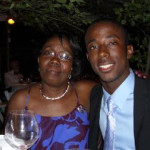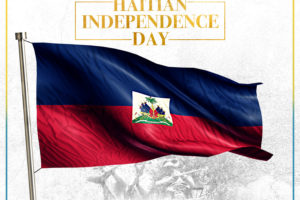
I hope we all know by now that January 1st was Haitian Independence Day, I found this post courtesy of my sister blogger Ms.Kreyolicious and wanted to share with my readers.
Did you know that January 1st is Haitian Independence Day? Well, did you? You did, didn’t you, being such a diligent student. Now let’s learn some things about that day and certain events that led to that day.
12. The Haitian Declaration of Independence was signed in the city of Gonaives, on, yes, January 1, 1804. Future generations never fail to commemorate it. According to historian Jean-Robert Constant, in 1904 President Pierre-Nord Aléxis visited that city to mark the 100th anniversary of Haitian Independence Day. In 2004, the then-president of Haiti, Jean-Bertrand Aristide held ceremonies to recognize two centuries of Haitian Independence. Constant also maintains that in 1954, Paul Eugène Magloire who was president of Haiti for some of the 1950s, traveled to the city of Gonaives to assist a special mass in honor of the day. A flag was adopted and sewn by a seamstress in Archaie on May 18, 1804. Her name was Catherine Flon. And Haitians make and eat soup joumou, a pumpkin soup that was reportedly only consumed by masters of the slaves.
11. The former slaves of St. Domingue and the freedmen, who led a successful slave revolt in 1791 did not act alone. When one reads accounts of the Haitian Revolution, names like Toussaint L’ouverture, Jean-Jacques Dessalines, Henri Christophe, Alexandre Sabès Pétion, Capois la Mort, Jeannot Billet, André Rigaud, George Biassou, Jean-François Papillon—turn up a great deal. But behind all these men there was a legion of women…women soldiers like Romaine la Prophetesse, Sanite Belair, Jeanne Lamartinière, Marie-Claire Hereuse (later an Empress alongside her husband Jean-Jacques Dessalines). Historians like Marcelle Desinor emphasizes the heroism of women like Henriette of St. Marc, Suzanne Simon-Louverture, Toussaint L’ouverture’s wife, and countless women who remain nameless and unmentioned in the history of Haiti.
10. And while the slave revolt of 1791 would be the first successful slave revolt in the new world, it wasn’t the first attempt. In the book Roadmap to Haiti’s Next Revolution, Rubens Francois Titus contends that as early as 1522, when Haiti was under Spanish rule, there had been a slave uprising, albeit unsuccessful one. Titus also points at 1679′s uprising led by Padrejean a slave near Port-de-Paix, and another one in 1697 in an area of Haiti called Petit-Anse and Quartier Morin led by unnamed slaves. According to colonial expert Jacques Cauna, by the time Padrejean was captured, he had killed his master and continued his insurrection well into other parts of St. Domingue (Haiti) including La Tortue, Saint Louis and Port Margot. He led 25 other runaway slaves, and hid out in La Tarare, an inaccessible mountain. The buccaneers—seaside adventurers in Haiti—had to be recruited to put out this uprising. Even then, contends Cauna, some of Padrejean’s followers managed to escape to the other side of the island. Cauna also recounts how in 1691, Jannot Marin and Georges Dollot were condemned to be burned alive after their plot to kill everyone from babies down in Port-de-Paix was discovered. In 1758, Makandal was burned at the stake for orchestrating a wide-scale poisoning of white planters and their families. Makandal had been born in Africa, and according to some sources was raised as a Muslim before being brought to Haiti as a slave. He was an expert botanist and had an impressive knowledge of plants (especially poisonous ones!) was also fluent in Arabic (according to some accounts).
9. Dessalines did not annihilate all the whites, or all the French after Haiti gained its independence. Jean-Jacques Dessalines actually kept around the French clergy and members of the medical profession, among scores of others. He made a declaration that everyone in Haiti, and born of Haiti would forever be known as “black” regardless of color and racial heritage. As noted above, his wife and many others hid white French colonists and their families.
Continue Reading Here….




















Reblogged this on MERLOZE MARKETING.